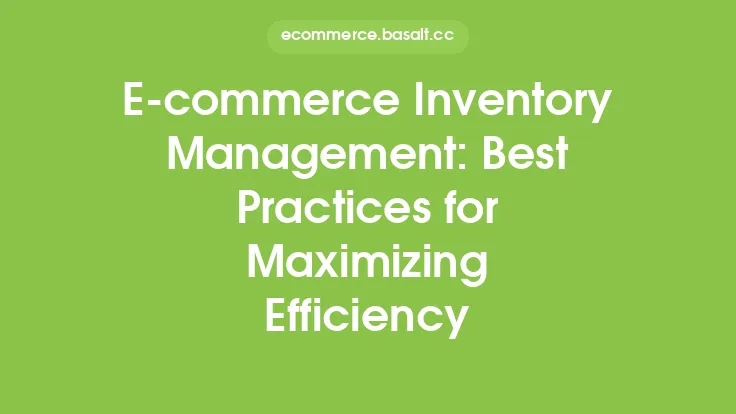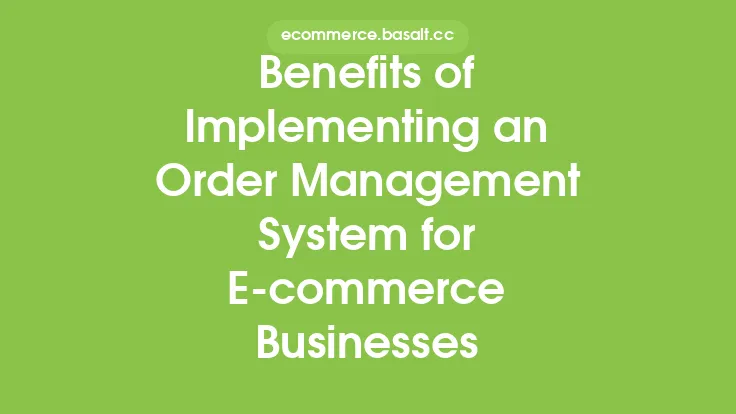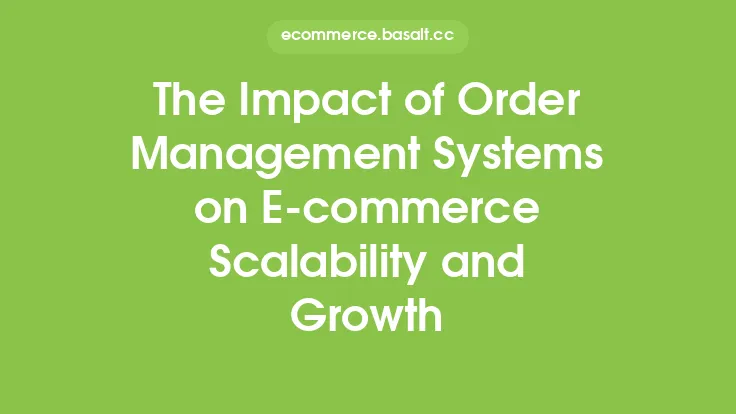When it comes to e-commerce, having a seamless and efficient order management process is crucial for providing excellent customer service, reducing costs, and increasing revenue. However, order management is not a standalone process, and it needs to be integrated with other e-commerce systems to achieve maximum efficiency. In this article, we will discuss the best practices for integrating order management with other e-commerce systems.
Introduction to Integration
Integrating order management with other e-commerce systems is essential for creating a cohesive and efficient e-commerce ecosystem. This integration enables the free flow of data between different systems, allowing businesses to automate processes, reduce manual errors, and improve overall performance. Some of the key systems that order management needs to be integrated with include enterprise resource planning (ERP) systems, customer relationship management (CRM) systems, inventory management systems, and shipping and logistics systems.
Best Practices for Integration
To ensure seamless integration, businesses should follow certain best practices. First, it is essential to define the scope of integration and identify the systems that need to be integrated. This will help businesses to determine the type of integration required, such as API-based integration or EDI-based integration. Next, businesses should choose an integration method that is scalable, flexible, and secure. They should also ensure that the integration is real-time, allowing for instant updates and synchronization of data between systems.
API-Based Integration
API-based integration is a popular method of integrating order management with other e-commerce systems. APIs (Application Programming Interfaces) provide a set of protocols and tools that enable different systems to communicate with each other. API-based integration allows businesses to integrate their order management system with other systems, such as ERP, CRM, and inventory management systems, in real-time. This enables instant updates and synchronization of data, reducing manual errors and improving overall efficiency.
EDI-Based Integration
EDI (Electronic Data Interchange) is another method of integrating order management with other e-commerce systems. EDI involves the electronic exchange of business documents, such as orders, invoices, and shipping notices, between different systems. EDI-based integration is commonly used in industries where there is a high volume of transactions, such as retail and manufacturing. EDI-based integration enables businesses to automate processes, reduce manual errors, and improve overall efficiency.
Real-Time Integration
Real-time integration is essential for ensuring that data is synchronized instantly between different systems. This enables businesses to respond quickly to changes in demand, inventory levels, and shipping schedules. Real-time integration also enables businesses to provide excellent customer service, as customers can track their orders and receive instant updates on the status of their orders.
Security and Scalability
When integrating order management with other e-commerce systems, security and scalability are essential considerations. Businesses should ensure that the integration is secure, using protocols such as SSL and TLS to encrypt data. They should also ensure that the integration is scalable, able to handle high volumes of transactions and data. This will enable businesses to grow and expand their operations without worrying about the integration failing or becoming bottlenecked.
Testing and Quality Assurance
Testing and quality assurance are critical components of integrating order management with other e-commerce systems. Businesses should test the integration thoroughly to ensure that it is working correctly and that data is being synchronized accurately. They should also conduct quality assurance tests to ensure that the integration is secure, scalable, and reliable.
Change Management
Change management is an essential aspect of integrating order management with other e-commerce systems. Businesses should have a clear change management process in place to ensure that changes to the integration are properly documented, tested, and implemented. This will enable businesses to minimize disruptions to their operations and ensure that the integration continues to work seamlessly.
Monitoring and Maintenance
Monitoring and maintenance are critical components of integrating order management with other e-commerce systems. Businesses should monitor the integration regularly to ensure that it is working correctly and that data is being synchronized accurately. They should also perform regular maintenance tasks, such as software updates and backups, to ensure that the integration continues to work seamlessly.
Conclusion
In conclusion, integrating order management with other e-commerce systems is essential for creating a seamless and efficient e-commerce ecosystem. By following best practices, such as defining the scope of integration, choosing a scalable and secure integration method, and testing and quality assurance, businesses can ensure that their order management system is integrated correctly with other systems. Real-time integration, security, and scalability are also essential considerations, as they enable businesses to respond quickly to changes in demand, inventory levels, and shipping schedules, while also providing excellent customer service. By monitoring and maintaining the integration regularly, businesses can ensure that it continues to work seamlessly, enabling them to grow and expand their operations without worrying about the integration failing or becoming bottlenecked.





